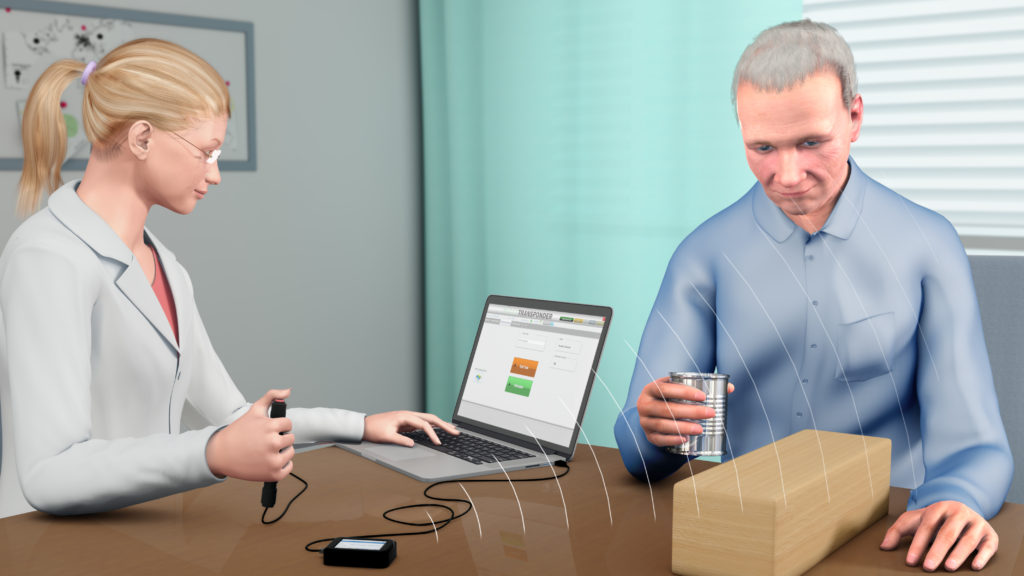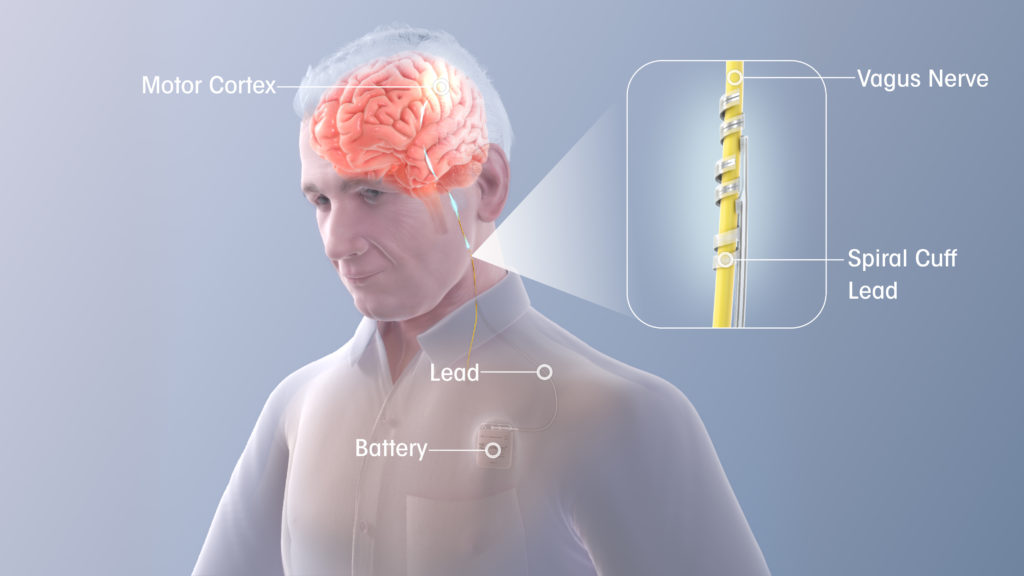
The Vivistim™ System has been developed by MicroTransponder to treat upper limb mobility deficits in stroke patients. The Vivistim™ System pairs an existing therapy called Vagus Nerve Stimulation (VNS) with rehabilitative physical therapy. VNS has been used in the U.S. and around the world to treat over 100,000 patients for epilepsy and depression.
The device is fully implantable and is designed to be used in conjunction with rehabilitative physical therapy. The image below depicts a therapy session for rehabilitative therapy with a stroke patient and an occupational therapist. The patient does a series of therapeutic tasks aimed at rebuilding the neural circuits in the brain that are responsible for upper limb movement. Each time the patient makes a correct movement, the therapist pushes a button and the patient receives a small burst of neurostimulation, which activate the vagus nerve. The tiny burst of stimulation may be so small that the patient is not able to feel them – it just depends on the setting and the patient’s tolerance. The patient’s perception may change even during a session.

How it Works
MicroTransponder’s approach to treating stroke is based on decades of scientific research. The innovative approach pairs a well-known treatment called vagus nerve stimulation with physical therapy.
One might ask the question, “How can a nerve in the neck cause changes in the brain?” The vagus nerve is unlike any other nerve in the body. It directly connects to the brain and sends important signals to tell the brain what to learn. For example, when someone is exposed to a stressful event, a hormone called epinephrine is released into the bloodstream, which activates the vagus nerve. The vagus nerve then sends a signal to the brain to release the neurotransmitter norepinephrine in a region called the amygdala, which strengthens memory storage for the emotional feelings during that specific time. This is why people often vividly remember traumatic events in great detail. The vagus nerve is sending a signal, telling the brain what to learn and when to learn it.

The MicroTransponder team utilizes this natural response system by directly stimulating the vagus nerve while the patient is moving its muscles, which tells the brain to “pay attention” to that muscle movement. This simultaneous pairing of that muscle movement with vagus nerve stimulation (VNS) strengthens the motor neuron circuit that is responsible for that movement. Consistently pairing VNS with motor neuron circuits helps rebuild those circuits and the brain relearns the commands to enable the muscles to perform specific tasks. Over time, the patient is able to more fully use their upper limbs and do more precise movement tasks. The goal is for full restoration of upper limb movement. We have published numerous animal studies showing the success of this approach in several academic journals, including Neurobiology of Disease in 2013 and Stroke in 2016.
